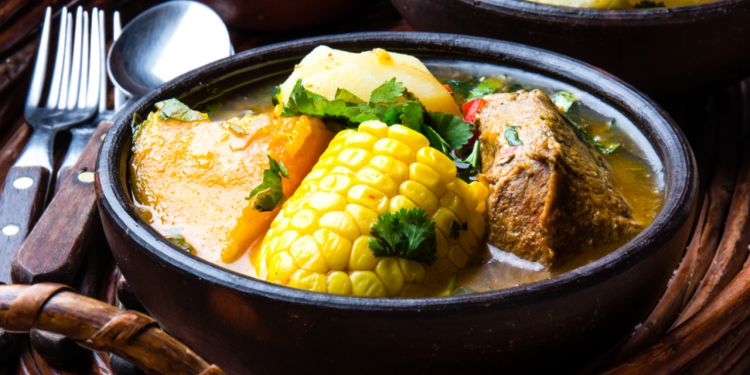
The food culture and traditions of Chile stem from its native Mapuche heritage as well as from the (mainly Spanish) Europeans settlers. The culture differs depending on the area of the country - north, central, or south.
The food culture of the north of Chile
Peru has a strong influence on cuisine in the north of Chile, and as a result, it is easy to find an abundance of tropical fruits like the chirimoya and lucuma. There are also a lot of corn-based foods like pastel de choclo and humitas which are like Mexican tamales. Pastel de choclo is a corn pudding with ground beef, sliced hard-boiled egg, raisins, and olives traditionally served in a clay bowl.
Asado is a barbecue grill favourite in all parts of Chile but only in the north can you try the unusual meats of llama or alpaca.
Finally, Quinoa is native to Peru, but it is frequently found in northern Chile. It is often served as a salad called timbal de quinoa served with avocado.
The food culture in Central Chile
The central part of Chile is significantly influenced by the many fruits and vegetables grown there in its Mediterranean climate. Avocado, or palta, and tomatoes are popular in many salads. Cazuela, a popular comfort food, is a stew with chicken or beef served in a broth with a potato, a portion of pumpkin, a piece of corn on the cob, and other veggies such as bell peppers, carrots, and green beans.
A classic Chilean sweet is Pan de Pascua, a candied fruit bread that is served at Christmas and Easter. And the favourite drink of Chile is Mote con Huesillos. Mote is a syrupy sweet peach nectar served with dried peaches and husked wheat. Though it may sound unusual, it is one of the most commonly served drinks throughout Chile.
The food culture in Southern Chile
The cuisine of southern Chile is influenced by the traditions of the Mapuche, the indigenous people of southern Chile. Chiloe, the large island south of Puerto Montt, also has many particular customs and traditions.
Asado al palo is grilled lamb roasted near the fire on a stick or rotated on a spit over the fire. Cazuela de chilote is the traditional cazuela of Chiloe made with choros (mussels) and lamb. Milcao is a traditional fried potato pancake in Chiloe. Curanto is a seafood feast cooked in a pit of hot stones with sausage, pork, potatoes, and milcao wrapped in the leaves of the native nalca plant. The Mapuche people have also contributed merken, a spice made from dried and smoked red chillies and coriander which is often used to flavour meat.
There is also a strong influence from the German immigrants who arrived in 1860. Examples of this influence include Kuchen and berlines, which are famous German pastries served in the south of Chile.
Typical food in Chile
Empanadas are a mainstay in all parts of South America, but each country has its particular style of empanada. In Chile, the most typical is empanada de pino, which are pastries baked with a mixture of beef, onion, sliced hard-boiled eggs and an olive. It is the go-to fast food of Chile along with the Chilean-style hot dog known as a completo! It includes a boatload of mayo, chopped tomato, and sauerkraut. Remove the kraut and add mashed avocado, and it becomes a completo italiano.
Bread is the staple of most cultures, and Chile is no different. The most popular kinds of bread are the marraquetas which are light and fluffy with a crispy exterior and hallullas, which are a more substantial round roll. Hallullas are served at most restaurants with pebre which is chopped tomato, onion, and cilantro condiment.
Useful link:
We do our best to provide accurate and up to date information. However, if you have noticed any inaccuracies in this article, please let us know in the comments section below.






